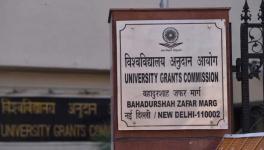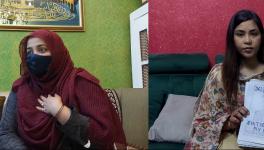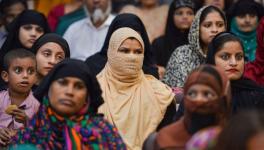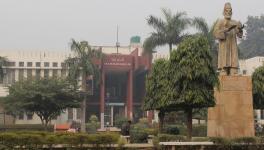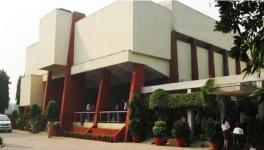How Artists Are Making Shaheen Bagh Protest Creative
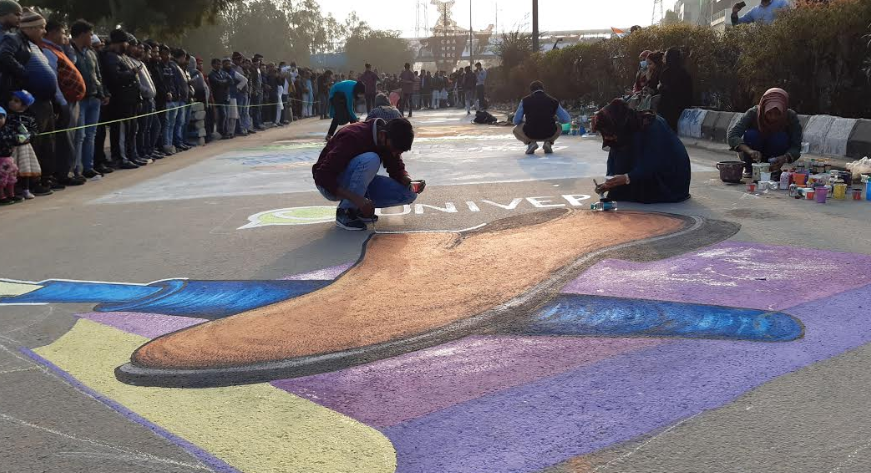
New Delhi: In Leo Tolstoy's words, art holds the power to move the unmovable. Indeed, it speaks louder than the words, which is being seen and heard in the ongoing stir in Shaheen Bagh. The entire protest site has been turned into an art gallery, highlighting the historic protest by women belonging to the predominantly Muslim neighbourhood in Southeast corner of the national capital.
Nearly a half kilometre stretch of road number 13 A—which connects Sarita Vihar/Jasola and Mathura Road near Apollo Hospital in Delhi and Fridabad in Haryana, to Noida in Uttar Pradesh through Kalindi Kunj—near Shaheen Bagh, where women are staging an indefinite sit-in for the past 39 days displays an eclectic collection of several graffiti, art installations, photographs and posters.
The idea to fill roads and walls near the protest sites across the national capital germinated with a painting by Ashish, an alumnus of Jamia Millia Islamia’s Fine Arts Department, in his university campus where a round the clock ‘dharna’ by students and local residents is also going on.
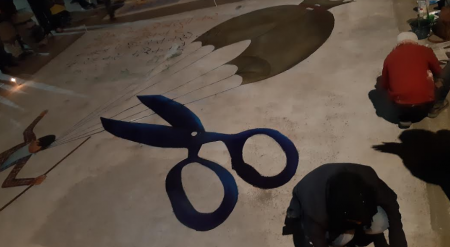
“Our painting at Jamia was liked by many. We got wonderful response. It prompted us to decide to form a group of artists to provide them a platform so that they can express their resistance to the black, discriminatory and unconstitutional law through their artworks. We formed a group called Artists Rise for India (ARI), which has now been joined by students from different universities who come to us with their concept. We filter and improvise their ideas, if needed, and provide them with paint and brush. The paintings you are seeing is a result of that,” he told NewsClick.
He added that people easily connect with artwork. They enjoy it and click photos, he said, adding that it leaves an imprint on them because “we try to depict their worries and problems with the help of our paint and brush”.
“We can neither deliver speeches, nor raise slogans. We are artists, we speak through the medium of art, which has always troubled those in power. Had it not been the case, the poetry of Faiz Ahmad ‘Faiz’ would never have been interpreted as ‘anti-Hindu’. The powerful words of his poetry forced the ruling party to feel discomfited. And therefore, its leaders and proxies indulged in a campaign to discredit it. As this protest is spreading across the country in different forms, I am sure this regime will also be forced to set aside its arrogance and come to negotiation table on day,” he added.
Also watch: Ground Report: Women Against Oppression in Shaheen Bagh
Several paintings at Shaheen Bagh have different messages. A graffiti shows a pen lying on a pile of books, which are being crushed under a police boot, depicting the recent incidents of violence across universities in the country and thriving misinformation through Whatsapp
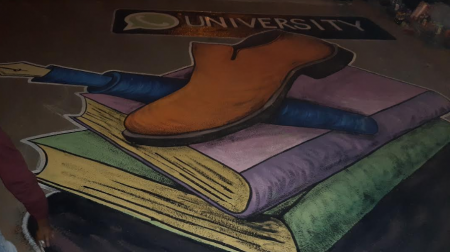
.
In another painting, Prime Minister Narendra Modi has been depicted as a mirror image of Adolf Hiter, signifying the alleged authoritarian regime; whereas, Delhi Police personnel, when they look at mirror, find themselves as saffron vigilantes.
One graffiti displays how the government is allegedly trying to clip the wings of those who are aware of their rights and want to fly high, asking the government very uncomfortable questions.
A hand drawing entitled Vividhta Mein Ekta (Unity in Diversity) shows Prime Minister Modi and Home Minister Amit Shah being stung by honey bees after they disturbed their hive. The artists said that the beehive is India, which is diverse but united. The HM and PM has disturbed it by bringing CAA. Now, the bees (the people of the country belonging to different faith) have hit the roads to rise against the government’s anti-people stand.
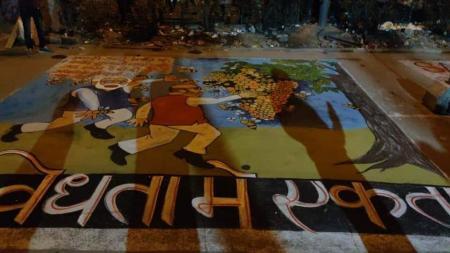
Another artwork shows a complex web which has different universities (Jamia, JNU and AMU). The Supreme Court and Parliament are at its two corners. The artists said they have tried to depict that students of these universities have their grievances and want their voices to be heard in Parliament.
“Whatever is happening in the country is like a ‘Bhool Bhulaiyaa’ (maze). A mess has been created across the country. No one has any direction where to go. We are trying to depict how our protest has spread from our campus. From Jamia, it went to AMU (Aligarh Muslim University) and JNU (Jawaharlal Nehru University) and then throughout the country. Through this artwork, we are also trying to say that we want our voices to be heard in the Supreme Court and Parliament. But it’s not so easy. There are so many obstacles which are creating hurdles in our approaching the protectors and temple of democracy, respectively. When we try to reach Parliament and the top court with our grievances, we have to pass through a web – wherein the Constitution of India is trapped and our blood is spilled as a result of alleged police brutality,” explained Ruquaiya Khatoon, a student of Jamia Millia Islamia’s Fine Arts Department.
She said art has the power to convince people more than speeches and slogans. “It also forces those who pretend to be mute spectators to speak out. Through our visual form resistance, we are trying to shake the conscience of our deaf and blind government,” she said.
She added, “The government is still living in a fool’s paradise. They have not recognised the people’s power. Instead of mocking protests and indulging in maligning protesters who are out on the street, they must listen to them.”
Also read: In Photos: Shaheen Bagh Is Everywhere!
“Everyone has his or her own way to register their protest,” said Almas—a students of Fine Arts Department at Jamia, adding that “we are expressing our dissent through brush and paint. We will continue doing so till the government hears our voice”.
“Artists don’t have religion. They are a very sensitive lot. They observe injustices being done in the society and beautifully put it forth through their imagination, which appeals the people,” she added.
“Art,” said another artist Saif, “is basically a medium through which people speak. We make our message loud and clear about what we want to tell the government. It invites viewers to study it, engage with it, learn from it and ask questions. History has observed that mankind has used art for a great number of distinct functions, which is why the purpose of art cannot be compressed into a single concept. Much like music and writing, art — in its own unique way — is created and enjoyed for different reasons,” he explained.
Another artist Sehar, from Jamia Millia Islamia, acknowledged that the continuous blockade is causing inconvenience to people. “But those who are protesting belong to this great nation. The recent government decision is a cause of concern for us as well and therefore, we are democratically registering our dissent. We are also facing problems. Leaving all works and studies, we are on the street because it’s a question of our existence,” she concluded.
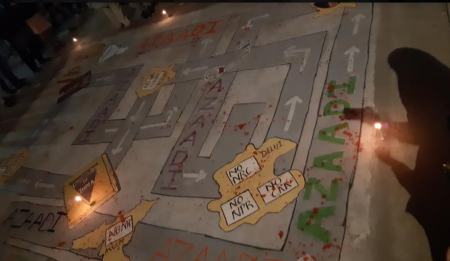
The continuous protest by women residents of Shaheen Bagh against the controversial Citizenship (Amendment) Act, 2019 or CAA, the National Population Register (NPR) and the proposed National Register of Indian Citizens (NRIC) has inspired similar demonstrations across India.
Get the latest reports & analysis with people's perspective on Protests, movements & deep analytical videos, discussions of the current affairs in your Telegram app. Subscribe to NewsClick's Telegram channel & get Real-Time updates on stories, as they get published on our website.












